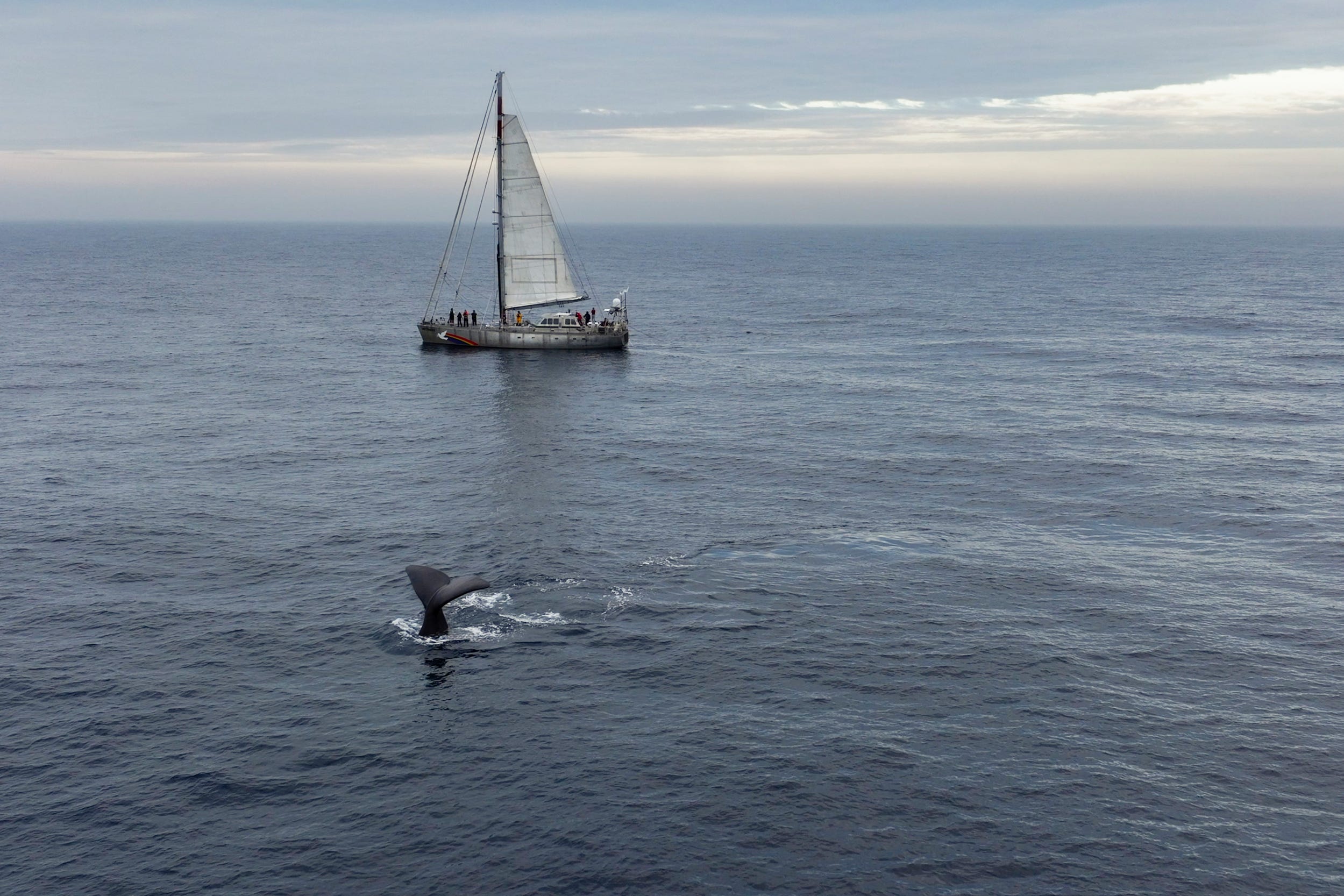Concerns for ocean biodiversity grow as wildlife found in deep-sea mining area
A campaign group is surveying whales and dolphins in Norway’s waters as the country’s government pushes ahead with plans for deep-sea mining.

Your support helps us to tell the story
As your White House correspondent, I ask the tough questions and seek the answers that matter.
Your support enables me to be in the room, pressing for transparency and accountability. Without your contributions, we wouldn't have the resources to challenge those in power.
Your donation makes it possible for us to keep doing this important work, keeping you informed every step of the way to the November election

Andrew Feinberg
White House Correspondent
Greenpeace has found high levels of biodiversity in an area targeted for deep-sea mining, as concerns grow over the impact on ocean wildlife.
The campaign group is surveying whales and dolphins on an Arctic expedition as Norway’s government pushes ahead with plans to open the country’s waters to deep-sea mining exploration.
Greenpeace said its team have already identified deep-diving vulnerable whales and dolphins close to a seamount in the proposed mining area since the survey began at the end of July.
Deep sea mining, which involves scooping up metals and minerals from the ocean’s seabed, has yet to start full-scale commercial production.
Environmentalists and scientists have warned that the practice could cause widespread pollution, underwater noise and irreparable damage to ecosystems that act as critical carbon sinks.
In one of the proposed mining areas near Jan Mayen, the Greenpeace survey identified what seemed to be four different groups of sperm whales, the largest of all toothed whales, which has “vulnerable” status and can dive down to at least 2,000 metres.
The scientists have also seen two more sperm whales, orcas (killer whales), multiple groups of dolphins, several minke whales and a fin whale, the second largest animal on the planet which also has “vulnerable” status, the campaign group said.
A number of sperm whales were seen within the mining area, particularly around the Mohns ridge, while white-beaked dolphins, a minke and a sperm whale were seen close to the Louise Boyd seamount.
Kirsten Young, lead scientist of the expedition, said: “These are striking results.
“We’ve surveyed near to a steep shelf on the ocean floor, and were expecting acoustic detections, but not on this scale.
“We’ve been hearing sperm whales on the hydrophone all day. At least one of the groups were in the middle of foraging, and it is clear that this area is of great importance to the sperm whales in this part of the North Atlantic.”
The Greenpeace expedition has also sailed through an area where manganese crusts have been discovered – underwater rock formations in the deep sea, which some mining companies are interested in extracting on the Norwegian continental shelf.
But Haldis Tjeldflaat Helle, a Greenpeace campaigner aboard the expedition boat, said: “These are unique, untouched nature areas, which are home to rich wildlife and new-to-science species.
“Norway is plunging into a new industry without a clear understanding of the potential impacts of deep sea mining, both in the deep sea and further up in the water column.
“The Norwegian push for deep sea mining is anti-science, irresponsible and the opposite of what we need in the midst of an ongoing crisis for both the ocean and the climate.”
The Norwegian government sent out a referral proposal for the first round of permits for the extraction of seabed minerals in June for a 90-day public consultation.
The proposal covers 386 blocks which, combined, correspond to an area twice the size of Denmark.
The expedition will cover the mining area from Jan Mayen Island in the south of Norway, through international waters, all the way up to Svalbard, where they will arrive in mid-August after almost 20 days at sea.
PA has contacted the Norwegian government for comment.
Subscribe to Independent Premium to bookmark this article
Want to bookmark your favourite articles and stories to read or reference later? Start your Independent Premium subscription today.